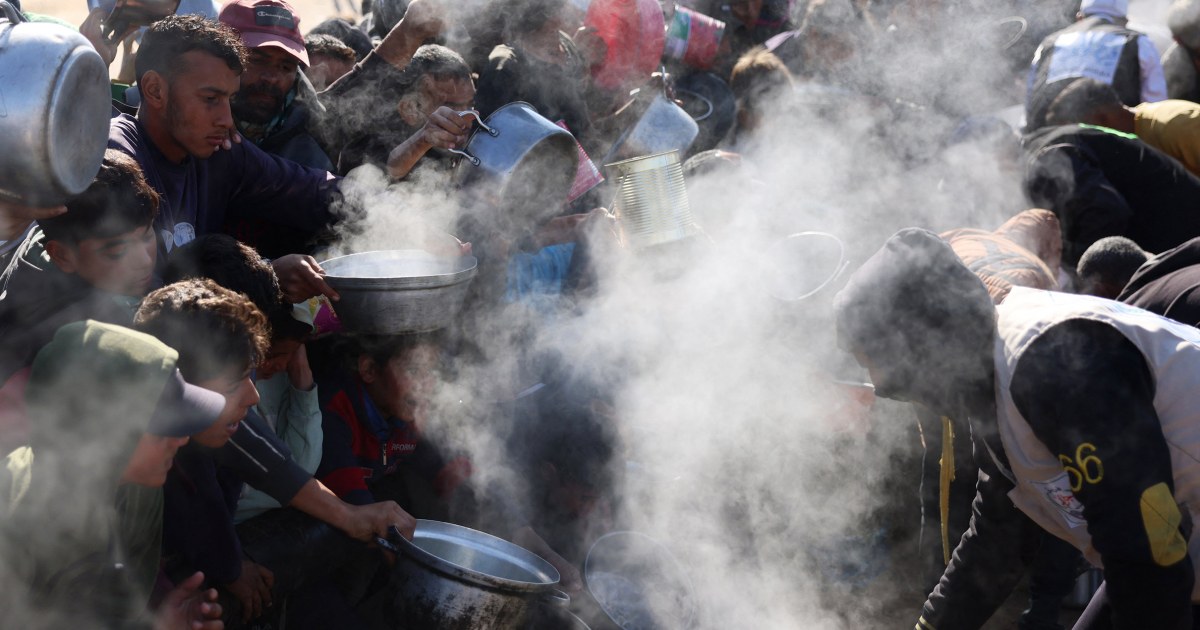World
Blinken in Middle East to push US ceasefire plan while Israeli troops advance

U.S. Secretary of State Antony Blinken visits Egypt and Israel on Monday hoping to deliver the ceasefire that President Joe Biden proposed last month, in an all-out push by Washington to secure an end to the Gaza war.
Ahead of his arrival, both sides doubled down on hardline positions that have scuppered all previous attempts to end the fighting, while Israel pressed on with assaults in central and southern Gaza, among the bloodiest of the war.
“We are committed to total victory,” Prime Minister Benjamin Netanyahu said in a statement released by his office, quoting remarks he made on Sunday to relatives of Israelis killed in Gaza.
“What is the main dispute? It is over Hamas’ demand … that we commit to stopping the war without achieving our goals of eliminating Hamas…. I am not prepared to do so. That is clear.”
Hamas, for its part, said Washington must push its ally Israel to halt the fighting.
“We call upon the U.S. administration to put pressure on the occupation to stop the war on Gaza, and the Hamas movement is ready to deal positively with any initiative that secures an end to the war,” senior Hamas official Sami Abu Zuhri told Reuters ahead of Blinken’s arrival.
The war has now entered its ninth month, since Hamas-led fighters killed 1,200 people and took some 250 others hostage in a rampage through southern Israel. In response, Israel launched an assault on the Gaza Strip that has killed more than 37,000 Palestinians and reduced most of the enclave to wasteland.
Palestinian officials said 40 more bodies arrived in hospitals over the past 24 hours. Thousands more dead are believed buried under rubble.
ASSAULTS IN RAFAH, NUSSEIRAT
In Rafah, the city on the southern edge of Gaza where Israel launched an offensive last month in defiance of White House pleas, residents said on Monday tanks had been trying to thrust deeper towards the north in the early hours of the morning. They were on the edge of Shaboura, one of the most densely populated neighborhoods at the heart of the city, a militant stronghold.
Around half of the Gaza Strip’s 2.3 million people had been sheltering in Rafah before last month’s assault, and a million have had to flee again.
Since last week, Israel has also launched a large-scale assault in the central Gaza Strip, around the small city of Deir al-Balah, the last population centre yet to be stormed. On Monday, residents said the Israelis had pulled back from some areas there but were keeping up air strikes and shelling.
Residents in Nuseirat north of Deir al-Balah were still clearing debris after Israel freed four hostages in a massive raid there on Saturday. Palestinian officials say 274 people were killed, making it of the deadliest assaults of the war. Israeli forces said they were aware of under 100 Palestinians killed there in intense gunbattles, and did not know how many were combattants.
“We are exhausted and helpless, enough is enough,” said Jehad, who fled under fire from Saturday’s assault in Nusseirat with his family and was now in Deir al-Balah. The family had already been displaced from Gaza City to Nusseirat, to Khan Younis, to Rafah and back to Nusseirat before their latest flight.
In video obtained by Reuters from Nusseirat, resident Anas Alyan, standing outside the ruins of his home, described how Israel commandos in shorts had appeared in the streets, firing wildly while F-16s and quadcopters fired from the air.
“Anyone moving in the street was killed – anyone moving, or walking, was killed immediately,” he said. “There are still children under this building. We don’t know how to pull them out,” he said, pointing to one ruin. “Today We found children martyred in that building,” he said, pointing to another.
After months of failed peace efforts, Biden chose a new tack with his public announcement of his proposal for a ceasefire on May 31, describing it as an offer that had already been accepted by Israel. U.S. officials say Biden deliberately unveiled it without asking the Israelis first, to increase pressure for a deal.
Full details have not been publicly disclosed, but the offer as described by U.S. officials is similar to texts floated since January in previous failed peace efforts: a long truce, over several stages, with gradual release of Israeli hostages ultimately leading to an end to the war.
What is different this time is that Israeli forces have now stormed most territory inside the Gaza Strip at least once, and Netanyahu is under greater domestic political pressure to reach a deal. Fighting has also escalated sharply in northern Israel along the Lebanese border, raising the threat of an all-out war between Israel and Lebanon’s Hezbollah group, which is far better armed than Hamas.
Benny Gantz, a popular centrist former military chief, quit Israel’s war cabinet on Sunday over what he described as the failure to outline a plan for the war’s end. That leaves Netanyahu more reliant on far right allies who say they will bring down his government if he agrees any deal to end the war without first destroying Hamas.
As in all previous peace attempts, Washington secured Israeli agreement to the text first, before seeking approval from Hamas through Egyptian and Qatari mediators. Israeli officials have acknowledged making the offer but have been lukewarm, with one Netanyahu aide describing it as “not a good deal”.
Hamas says it already agreed to the last Israeli peace offer earlier in May, only for the Netanyahu government to renege. Israel says the militants have previously attached unacceptable conditions.








